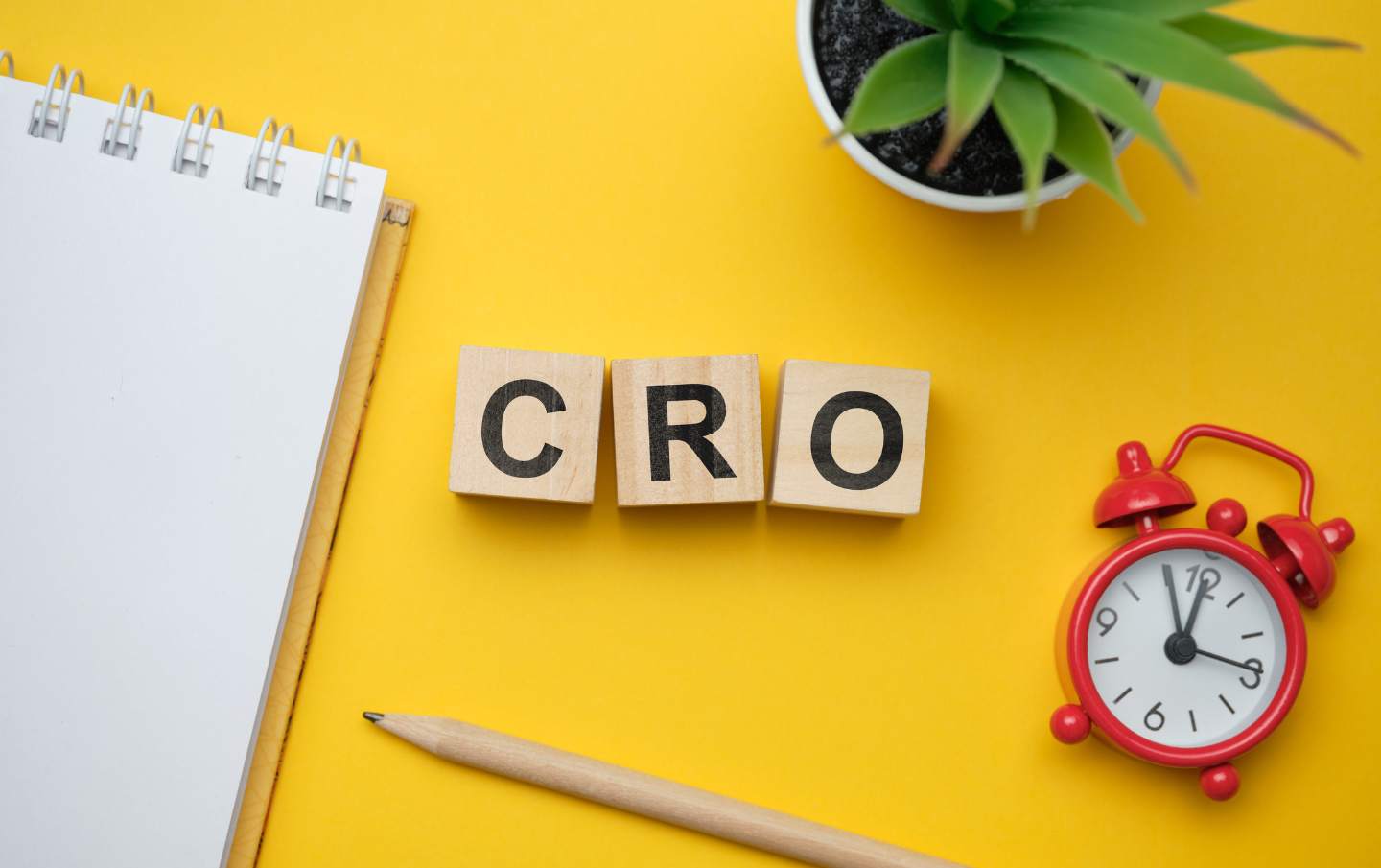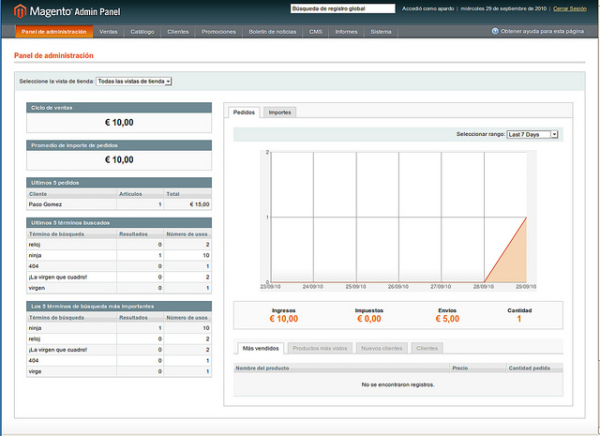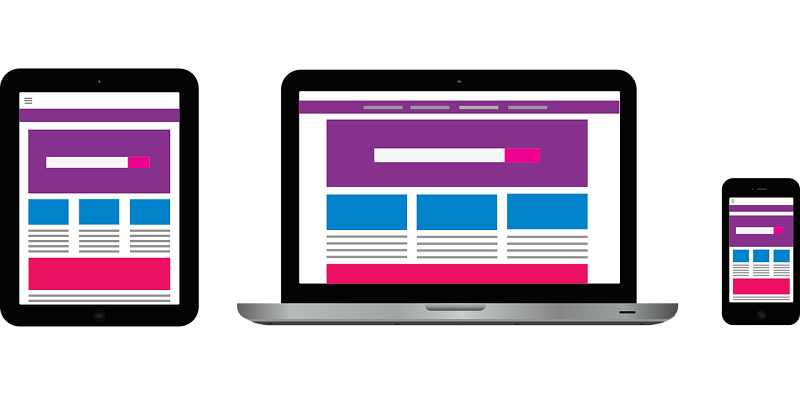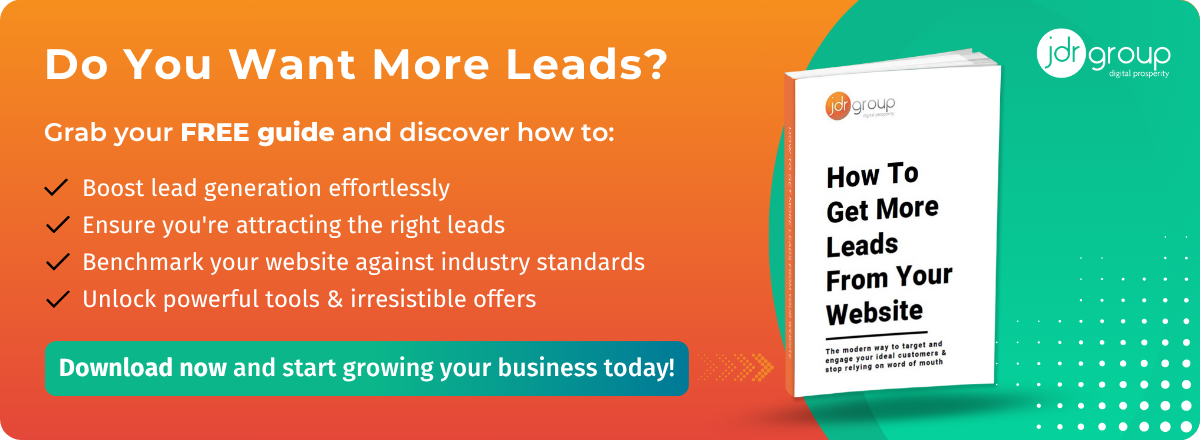How To Ensure Your Website Engages And Converts Visitors Into Customers
by Amber Denton on 01-Jun-2023 12:00:00

When making online sales, the first priority is to establish a website that showcases your products and services and effectively drives traffic to your business. However, attracting visitors to your site is just the first aspect of running a successful online presence. The real challenge is what to do when your visitors arrive, and then convert those visitors first into sales leads, and then into customers. To achieve this, you’ll need to ensure that your website is engaging and fully optimised for conversion, by investing in Conversion Rate Optimisation.
What Is Conversion Rate Optimisation (CRO)?
In digital marketing, Conversion Rate Optimisation (CRO) is the process of improving the performance of your content and website layout to convert more visitors into customers. In other terms, it means encouraging a visitor to take a specific action on your website, such as filling out a form, subscribing to a newsletter, or purchasing a product/service, expressing these clear calls to action (CTAs) through your content, your page layout, navigation, and even the colours, graphics, and URLs you use. CRO involves analysing data, conducting user research, and running experiments to improve the website's user experience and increase your conversion rate over time.
In this article, we’ll look at six actionable tips that can help improve your website CRO.
1. Make Sure Your Website Loads Quickly
Slow websites are a huge turn-off for visitors – it’s the digital equivalent of a large supermarket queue. You only have seconds to capture a visitor’s attention before they move on to your competitor’s site. The sweet spot is three seconds or less load time – any more than this and users are likely to ‘bounce’ away from your website. A bounce is a visitor that only visits one page of your website before departing, usually never to be seen again. Use a tool like Google’s PageSpeed Insights to measure your site load time and identify areas for improvement. Some quick fixes include having images be WebP files and not JPEG or PNGs, compressing said image files, minimising HTTP requests, and avoiding render-blocking JavaScript and CSS.
2. Keep Your Messaging Clear And Concise
One of the most important things you can do to improve your website’s conversion rate is to ensure your messaging is clear, consistent, and concise across your content assets. All of your web pages, blog articles, videos, infographics, and images should clearly communicate what your business does, what problems you solve for your customers, and why someone should choose you over your competitors. Be sure to highlight your unique selling points in all your content and make it easy for visitors to understand what you offer.
3. Make It Easy For Visitors To Find What They’re Looking For
The average size of a business website has increased dramatically over the past decade, from 4 to 5 pages to dozens, or even hundreds of pages and individual articles. Despite this change, however, your website must be extremely well laid out for visitors to find what they’re looking for quickly.
Nobody likes a website that’s difficult to navigate. Your website should be intuitive and easy to use, with menus and links that are obvious to find and follow, and that work consistently and correctly on all browsers and devices. Make it clear what each page of your website is about and how visitors can find what they’re looking for, along with suggestions on where to go next to pursue their research.
4. Use High-Quality Images And Videos
Images and videos are powerful tools to engage visitors and convince them to do business with you, supporting and enhancing your written content. Use high-quality images that accurately reflect your brand and the products or services you offer and optimise them for fast loading speeds. Videos can also be effective, especially if you’re trying to explain a complex concept or showcase your products in action.
5. Make Your Calls To Action Clear And Prominent
Your website should have clear calls to action (CTAs) on every page that tell visitors what you want them to do next. Whether it’s “buy now”, “sign up”, or “contact us”, your CTAs should be prominent and easy to find. Use contrasting colours and make your buttons stand out from the rest of your page to encourage visitors to act.
6. Test And Optimise Your Website Regularly
CRO isn’t a one-time fix; it’s an ongoing process. To ensure your website is always performing at its best, it’s important to regularly test and optimise different elements of your website. This might include testing different headlines, CTAs, or images to see what works best, and performance testing your site on different browsers and devices. Remember that your website is one of your most important marketing tools that requires ongoing attention and care, so don’t be afraid to experiment and try new things to see what works best for your business.
Find Out More
Improving your website’s conversion rate is a key part of building a successful online sales strategy. To find out more about our conversion rate optimisation services and how we can help you increase leads and make more sales online, please contact JDR Group today by calling 01332 343281.
Image Source: Canva
- Inbound Marketing (SEO, PPC, Social Media, Video) (824)
- Strategy (363)
- Sales & CRM (195)
- Marketing Automation & Email Marketing (190)
- Business Growth (164)
- Website Design (160)
- Hubspot (138)
- Lead Generation (115)
- Google Adwords (98)
- Content Marketing (94)
- Conversion (48)
- Case Studies (47)
- News (47)
- Ecommerce (39)
- Webinars (34)
- SEO (24)
- AI (20)
- Events (19)
- Video (17)
- LinkedIn Advertising (15)
- Video Selling (15)
- Software training (13)
- Niche business marketing (11)
- The Digital Prosperity Podcast (10)
- Facebook Advertising (6)
- HubSpot Case Studies (5)
- December 2025 (10)
- November 2025 (6)
- October 2025 (17)
- September 2025 (16)
- August 2025 (14)
- July 2025 (14)
- June 2025 (5)
- May 2025 (19)
- April 2025 (15)
- March 2025 (13)
- February 2025 (13)
- January 2025 (8)
- December 2024 (2)
- November 2024 (4)
- October 2024 (21)
- September 2024 (4)
- August 2024 (8)
- July 2024 (14)
- June 2024 (16)
- May 2024 (25)
- April 2024 (15)
- March 2024 (18)
- February 2024 (5)
- January 2024 (10)
- December 2023 (6)
- November 2023 (10)
- October 2023 (13)
- September 2023 (12)
- August 2023 (14)
- July 2023 (13)
- June 2023 (14)
- May 2023 (15)
- April 2023 (13)
- March 2023 (14)
- February 2023 (13)
- January 2023 (15)
- December 2022 (13)
- November 2022 (6)
- October 2022 (8)
- September 2022 (22)
- August 2022 (15)
- July 2022 (13)
- June 2022 (16)
- May 2022 (14)
- April 2022 (16)
- March 2022 (17)
- February 2022 (11)
- January 2022 (8)
- December 2021 (6)
- November 2021 (7)
- October 2021 (11)
- September 2021 (10)
- August 2021 (7)
- July 2021 (7)
- June 2021 (4)
- May 2021 (4)
- April 2021 (1)
- March 2021 (3)
- February 2021 (5)
- January 2021 (4)
- December 2020 (7)
- November 2020 (6)
- October 2020 (5)
- September 2020 (9)
- August 2020 (18)
- July 2020 (17)
- June 2020 (17)
- May 2020 (10)
- April 2020 (21)
- March 2020 (24)
- February 2020 (21)
- January 2020 (12)
- December 2019 (23)
- November 2019 (12)
- October 2019 (14)
- September 2019 (16)
- August 2019 (15)
- July 2019 (13)
- June 2019 (6)
- May 2019 (8)
- April 2019 (4)
- March 2019 (2)
- February 2019 (2)
- January 2019 (2)
- December 2018 (3)
- November 2018 (24)
- September 2018 (11)
- August 2018 (9)
- June 2018 (3)
- May 2018 (6)
- April 2018 (14)
- March 2018 (12)
- February 2018 (16)
- January 2018 (15)
- December 2017 (15)
- November 2017 (18)
- October 2017 (23)
- September 2017 (19)
- August 2017 (28)
- July 2017 (27)
- June 2017 (25)
- May 2017 (18)
- April 2017 (17)
- March 2017 (16)
- February 2017 (17)
- January 2017 (14)
- December 2016 (21)
- November 2016 (27)
- October 2016 (25)
- September 2016 (16)
- August 2016 (20)
- July 2016 (19)
- June 2016 (14)
- May 2016 (20)
- April 2016 (24)
- March 2016 (22)
- February 2016 (28)
- January 2016 (27)
- December 2015 (28)
- November 2015 (19)
- October 2015 (9)
- September 2015 (12)
- August 2015 (5)
- July 2015 (1)
- June 2015 (10)
- May 2015 (3)
- April 2015 (11)
- March 2015 (14)
- February 2015 (15)
- January 2015 (12)
- December 2014 (2)
- November 2014 (23)
- October 2014 (2)
- September 2014 (2)
- August 2014 (2)
- July 2014 (2)
- June 2014 (7)
- May 2014 (14)
- April 2014 (14)
- March 2014 (7)
- February 2014 (2)
- January 2014 (7)
- December 2013 (9)
- November 2013 (14)
- October 2013 (17)
- September 2013 (3)
- August 2013 (6)
- July 2013 (8)
- June 2013 (4)
- May 2013 (3)
- April 2013 (6)
- March 2013 (6)
- February 2013 (7)
- January 2013 (5)
- December 2012 (3)
- November 2012 (2)
- September 2012 (1)
Subscribe by email
You May Also Like
These Related Blogs

JDR: A Magento E-commerce Website Design & Development Company
Are you looking for a company that can design your e-commerce website in Magento? Well JDR can help. What is Magento? Magento is an open source e-comm …

How Does My Website Compare To My Competitors?
In the digital economy we live in, having a business website is a must. However, having a website alone is not enough: customers will not flock to you …

4 Things That Are Destroying Your Conversion Rate And How To Fix Them!
Conversions on your website are something that you define, as the business owner. A conversion could be a direct purchase, an enquiry form submission …




